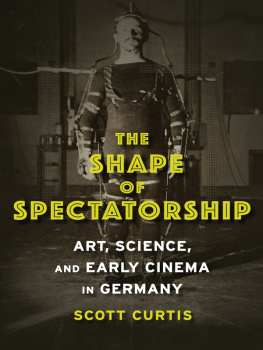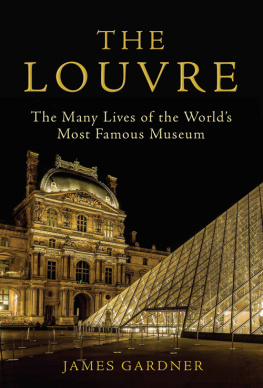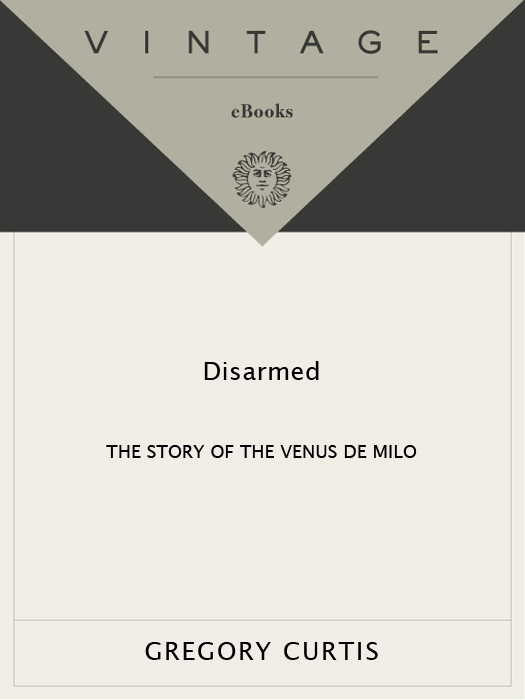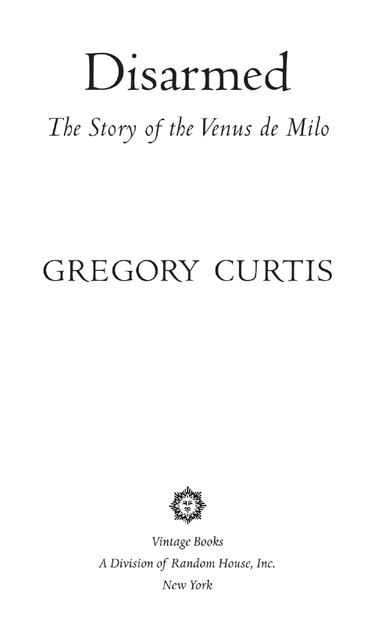
GREGORY CURTIS
Disarmed
Gregory Curtis was editor of Texas Monthly from 1981 until 2000. His writing has appeared in The New York Times, The New York Times Magazine, Fortune, Time, and Rolling Stone, among other places. A graduate of Rice University and San Francisco State College, he currently lives in Austin with his wife and four children.
FIRST VINTAGE BOOKS EDITION, NOVEMBER 2004
Copyright 2003 by Gregory Curtis
All rights reserved under International and Pan-American Copyright Conventions. Published in the United States by Vintage Books, a division of Random House, Inc., New York, and simultaneously in Canada by Random House of Canada Limited, Toronto. Originally published in hardcover in the United States by Alfred A. Knopf, a division of
Random House, Inc., New York, in 2003.
Vintage and colophon are registered trademarks of
Random House, Inc.
A portion of this work previously appeared in
Smithsonian magazine.
The Library of Congress has cataloged the Knopf edition as follows:
Curtis, Gregory, [date]
Disarmed : the story of the Venus de Milo / Gregory Curtis.
p. cm.
Includes bibliographical references.
1. Venus de Milo. 2. Aphrodite (Greek deity)Art.
3. Marble sculpture, Greek. 4. Marble sculpture, AncientGreece. 5. SculptureFranceParis. 6. Muse du Louvre.
I. Title.
NB163.V6C87 2003
733.3dc21
2003047464
eISBN: 978-0-307-48383-6
Author photograph Jerry Bauer
Book design by Virginia Tan
www.vintagebooks.com
v3.1
For Tracy
CONTENTS
PREFACE
Fractured Masterpiece
M ELOS IS an Aegean island where thirty thousand people looking for a bargain vacation arrive each summer like migratory birds. When they leave, the island returns to its unlovely self. It is dull, remote, harsha place where the only ways to make a living are by mining, farming, fishing, and hanging on desperately until summer brings the next flock of tourists.
Unfortunately, I was not there in summer but in early spring when the weather tends toward gray skies, rain, and powerful winds. I climbed the highest hill. It is crowned by the village of Plaka, a warren of narrow streets twisting between the straight white walls of stone and stucco houses. Lost for a while, I finally began following the occasional signs that pointed toward the ancient theater and eventually found myself walking along a narrow dirt road. There, across from the remains of a stone wall and tower, stood a small, solitary metal sign that said in English and Greek, SITE OF THE DISCOVERY OF VENUS OF MILOS .
Behind the sign was a short but quite steep slope covered with a haphazard profusion of olive trees. Grabbing branches for balance, I made my way down the slope, about ten yards or so, to a flat area covered with grass and wildflowers.
The ruins of another wall, once the continuation of the one above, ran down the slope and there, after pulling aside a few more olive branches, I saw a white stone plaque bolted to the crumbling wall. It had inscriptions in Greek, English, German, and French. The English read HERE HAS BEEN FOUND THE VENUS OF MILOS . This area was where the statue of the goddess once stood in an arched niche in a wall. But the exact site of the discovery is impossible to locate. Landslides long ago buried the wall with its niches. It must lie somewhere beneath the olive trees whose branches Id grabbed on the way down. Perhaps, deep in the ground, their roots entwine the missing arms.
After several minutes of trying to imagine what this place had once been like, I found myself disappointed and perplexed by exactly how lost and how untended the purported site turned out to be. I climbed back up the slope and followed the dirt road through what had once been a Greek and then a Roman city. There were the remains of a theater situated so the audience could look past the stage and out across a bay at the foot of the hill. There were the remnants of walls here and there. The long narrow field that had once been a stadium lined on one side by stone bleachers was still easy to identify. Occasionally, I ran across a part of a marble column lying on the ground.
During the next three days I talked several times with an archaeologist at the local museum, but there had been little work done at the site where the statue was discovered. But he did give me a map of the Greek city drawn after some light excavations done decades earlier. So each day I went to the ruins with that map in hand and explored. I drew my own maps and took photographs and eventually understood the layout of the ancient settlement.
Even so I found myself trying to imagine, not so much what the town had been like in ancient times, but what the ruins had been like in the spring of 1820 when the statue was uncovered. But it was impossible. The ruins have disintegrated so badly since then that I knew my mental reconstructions were mere imaginings. One fact, however, has not changed. These ruins were a lonely, isolated farmers pasture in 1820, and they are a lonely, isolated farmers pasture now. During my visits of several hours each day for four days the only other visitors were a herd of goats who were fenced in a distant corner.
I tromped around the ruins until I was convinced that I would never find anything more than I had already seen. I had learned only this. Melos, an island as boring in the past as it is today, may have been the first home of the Venus de Milo. But like so many other provincials who were blessed with talent, intelligence, or beauty, her life did not really begin until she arrived in Paris, the city that values both talent and intelligence but values beauty most of all.
T ODAY the Venus de Milo stands, as it has for decades, in an alcove at the end of a long hallway on the ground floor of the Louvre. Entering that hallway, you can see the statue in the distance, almost eighty yards away, looming over the crowd around it. Since the crowd obscures the base and legs, the nude torso appears to be an apparition. The deep whiteness of the marble is luminescent against the browns, blacks, and grays of the hallway. Distant, pale, and shimmering, unconcerned by the hubbub around her even though she is nude, the goddess seems to float above the admiring throng. She looks fresh, forceful, and completely original, the way she must have looked to the people who saw her when she was rediscovered almost two hundred years ago.
Moving closer brings more of the statue into view, and the unexpected power of seeing her at a distance diminishes. Now she becomes familiar. Though most people in the crowd are seeing the actual statue for the first time, they all have seen her image time and again. I first saw it on the cover of a box of Classicos matches from Mexico when I was six. I remember her naked breasts and her impassive face staring into the distance. Once I saw that image, I never forgot it. How could I? The Venus de Milo permeates our culture, where her image is shorthand for lofty ideals: truth, purity, and timeless beauty. She is in advertisements and cartoons, on the covers of record albums, and part of company logos. She is reproduced as saltshakers, vases, table lamps, and rubber toys that squeak. In serious art the Venus de Milo has inspired both homages and parodies by artists such as Rodin, Salvador Dal, Magritte, Max Ernst, and, in more recent years, Clive Barker and Jim Dine. Her image is so powerful that it easily rises over cultural boundaries. In 1964 France sent the statue on loan to Japan. When the ship carrying her arrived in Yokohama, more than 100,000 people came just to watch it dock. By the time she left Japan, one and a half million people had come to see her, borne past her display on a moving sidewalk.
















